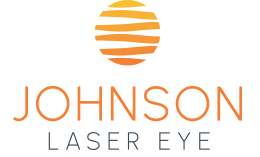Cataract surgery is one of the most commonly performed procedures worldwide. Each year, ophthalmologists restore the vision of millions of cataract patients using intraocular lenses (IOLs).
During cataract surgery, the natural lens of the eye that has been clouded by cataracts is removed and replaced with an IOL. This restores clear vision and prevents cataracts from ever returning.
Modern IOLs not only replace the clouded lens of the eye but can improve your pre-cataract vision. These lenses can correct vision at a single distance (monofocal), multiple distances (multifocal), or a continuous range of distances (extended depth of focus).
But which lens is right for your lifestyle and vision goals? Keep reading to learn more about the difference between a multifocal IOL and an extended depth of focus IOL and how to choose the best lens for you.
What is a Multifocal IOL?
Multifocal IOLs are lenses composed of rings that are set to different focusing powers. When light enters the eye, it is split among these different rings, correcting vision at two or more distances.
This allows patients to reduce their reliance on glasses and contacts, making everyday activities like working out, cooking, or driving less of a hassle. Multifocal IOLs can also save you expenses on visual aids in the long run, as you won’t need to constantly buy contacts or get your glasses repaired.
Certain multifocal IOLs can correct near and far distances, while other versions can also provide clear intermediate vision. However, patients who opt for this type of IOL are more likely to experience reduced contrast perception in low light, glare, halos, and starburst effects around lights at night after cataract surgery.
These visual issues are usually most pronounced shortly after surgery and often diminish as the eye adjusts to the new lens, but they are persistent for patients. You may also experience a noticeable transition when you shift your focus between distances.
What is an Extended Depth of Focus (EDOF) IOL?
Extended depth of focus (EDOF) IOLs have anelongated, continual focal range similar to progressive eyeglasses. This design results in a broader depth of focus, allowing patients to see a continuous range of vision more smoothly and with fewer visual distractions.
These IOLs can provide vision that is more like a person’s natural eyesight. EDOF lenses are known for delivering clear intermediate vision, making them a good choice for people who do a lot of tasks at arm’s length, like working on a computer or cooking.
However, they can be less effective at correcting near vision than multifocal lenses, and EDOF patients may still need glasses for near vision tasks. Because the focal points in an EDOF IOL are continuous, patients who choose this IOL report fewer instances of halo and glare.
They can also provide better contrast sensitivity, which is especially helpful in low-light conditions like driving at night.
Will I Need Glasses with Multifocal or EDOF IOLs?
Most patients who choose multifocal or EDOF IOLs are able to significantly reduce or eliminate their need for glasses and contacts. However, some patients still need them occasionally.
Several factors can determine whether you might still need glasses with a multifocal or EDOF IOL, including your prescription, your vision goals, and your eye health. Before the procedure, you should discuss your options and possible visual outcomes with Dr. Johnson at your cataract evaluation.
Which IOL is Better for Computer Work?
With its emphasis on clear intermediate vision, an EDOF is usually the best choice for patients who want to work on their computer glasses-free. Although some multifocal lenses can correct intermediate vision, that vision may not be as smooth and comfortable as with an EDOF.
How Do Multifocal and EDOF IOLs Impact Night Vision?
EDOF IOLs provide more contrast in low light and fewer halos or glare, allowing for higher-quality night vision. Multifocal IOLs may not prevent halos and glare, making seeing clearly at night more challenging.
What Activities are Better with Multifocal IOLs Versus EDOF IOLs?
Because multifocal IOLs often provide clearer near-distance vision, they might be better for someone who enjoys reading, knitting or embroidering, or drawing and painting. EDOF IOLs are ideal for active individuals who rely on clear intermediate and far-distance vision for activities like working at a computer, playing sports, and driving at night.
Does Insurance Cover Multifocal IOLs and EDOF IOLs?
In most cases, multifocal and EDOF IOLs are not covered by insurance, as they are considered advanced lenses. Monofocal IOLs, which can restore vision at a single distance, are usually covered by insurance and Medicare.
However, patients who choose monofocal IOLs will still require visual aids to achieve a full range of vision. Johnson Laser Eye offers a variety of payment plans to help make advanced lenses like multifocal and EDOF IOLs more affordable, allowing you to budget and pay in installments over time.
At your cataract evaluation, you can ask Dr. Johnson about which financing options are available to you.
Achieve Your Dream Vision with Advanced IOLs at Johnson Laser Eye
Both multifocal and EDOF IOLs represent remarkable advancements over traditional monofocal lenses. They offer cataract patients the potential for clearer vision at multiple distances and greater freedom from the hassle of glasses and contacts.
With the right IOL, cataract surgery can not only restore your vision but be an opportunity to see clearer than ever!
Are you ready to learn more about enjoying clearer vision after cataract surgery with multifocal or EDOF IOLs? Schedule an appointment at Johnson Laser Eye in Wilmington, NC, today!





